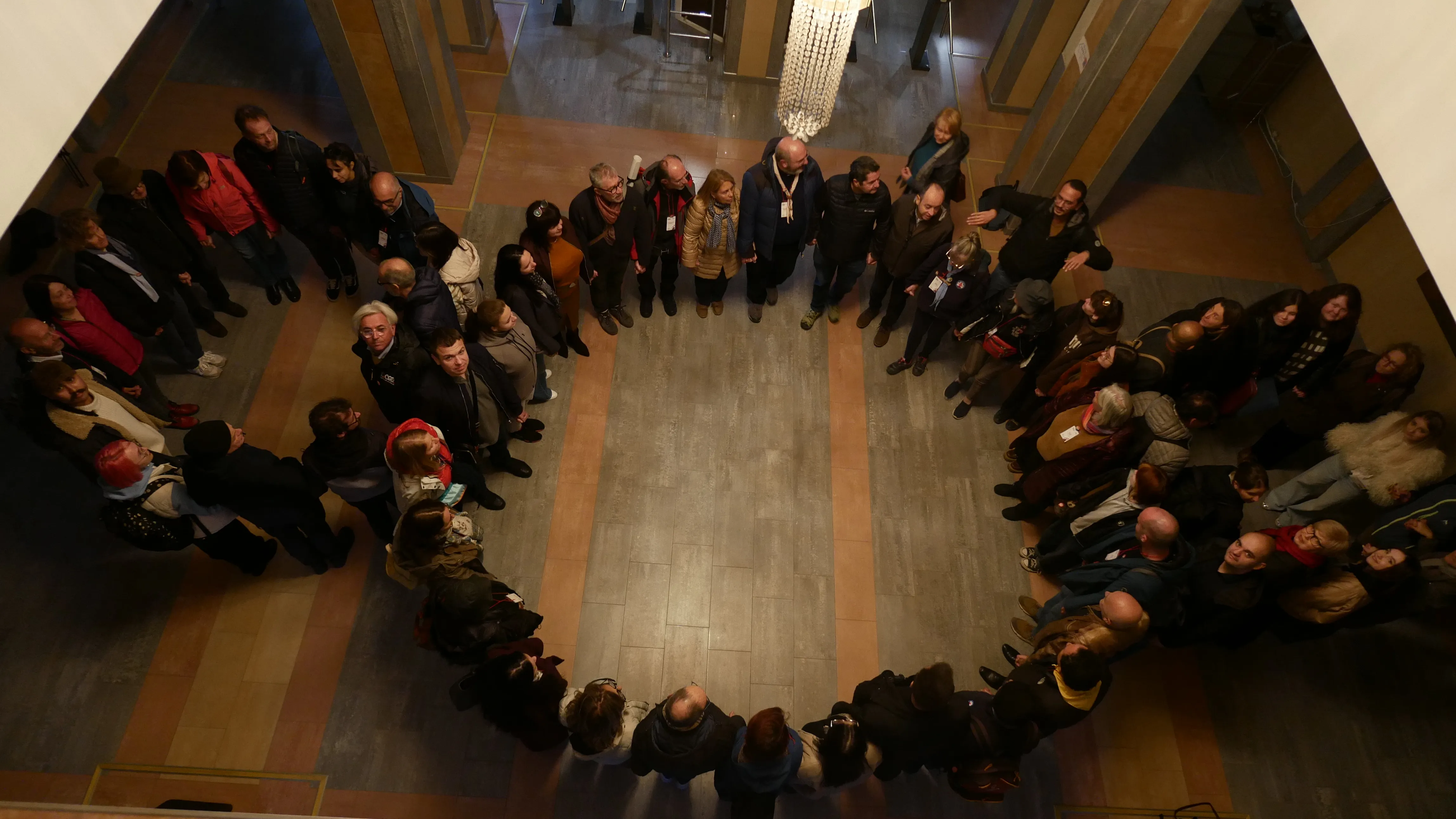What can we
help you find?
Ricerche suggerite
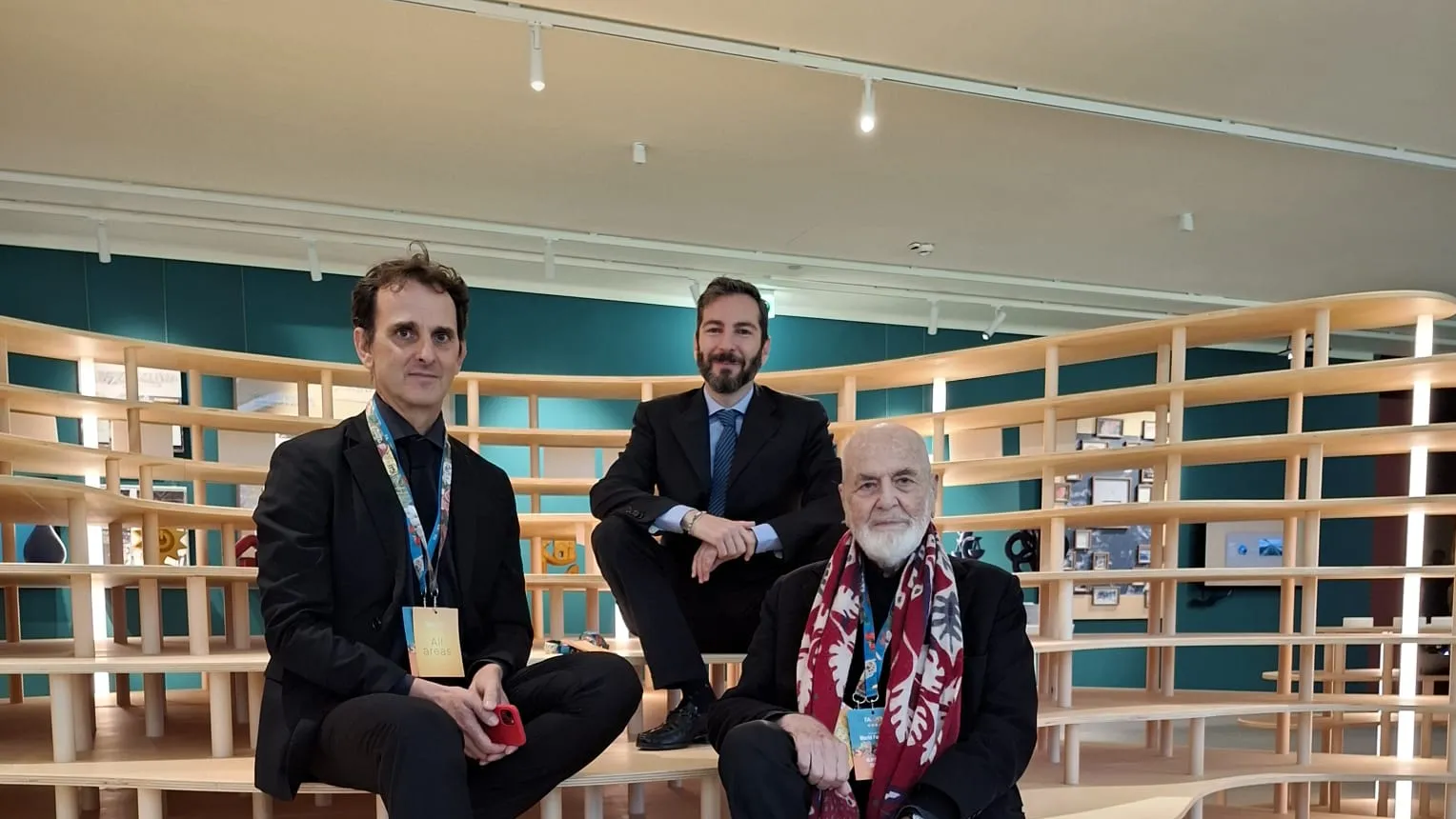
Cultivating harmony: The Third Paradise becomes a space for co-creation at the first FAO museum.
Through light, wood, and seeds, Cittadellarte, inspired by Michelangelo Pistoletto and in collaboration with Guardini Ciuffreda Studio, has created the installation "Cultivating the Third Paradise" for the new FAO museum: a work that grows over time and invites us to cultivate beauty, awareness, and responsibility toward the Earth. In this spirit, Pistoletto met with President Sergio Mattarella at the inauguration on October 16 in Rome and was a speaker at the talk "Better Life - Dignity, Justice & Opportunity in Food Systems."
On the occasion of the opening of FAO MuNe - the Food and Agriculture Museum and Network, inaugurated in Rome for the 80th anniversary of FAO and World Food Day 2025, the work "Cultivating the Third Paradise" was presented. Inspired by the vision of Michelangelo Pistoletto, it was conceived and created by Cittadellarte with the design and technical collaboration of Guardini Ciuffreda Studio. The installation is an integral part of the Traditions and Innovations room, the conceptual heart of the new museum, and invites reflection on the harmony between nature and technology in the planet's diverse cultures and societies, principles that guide FAO's mission to build a sustainable food future. Born from the vision of Michelangelo Pistoletto and the Cittadellarte civic art laboratory and school, "Cultivating the Third Paradise" is conceived as a place for collective encounter and reflection, a workspace where art, traditional knowledge, science, and active citizen participation merge in a shared experience.
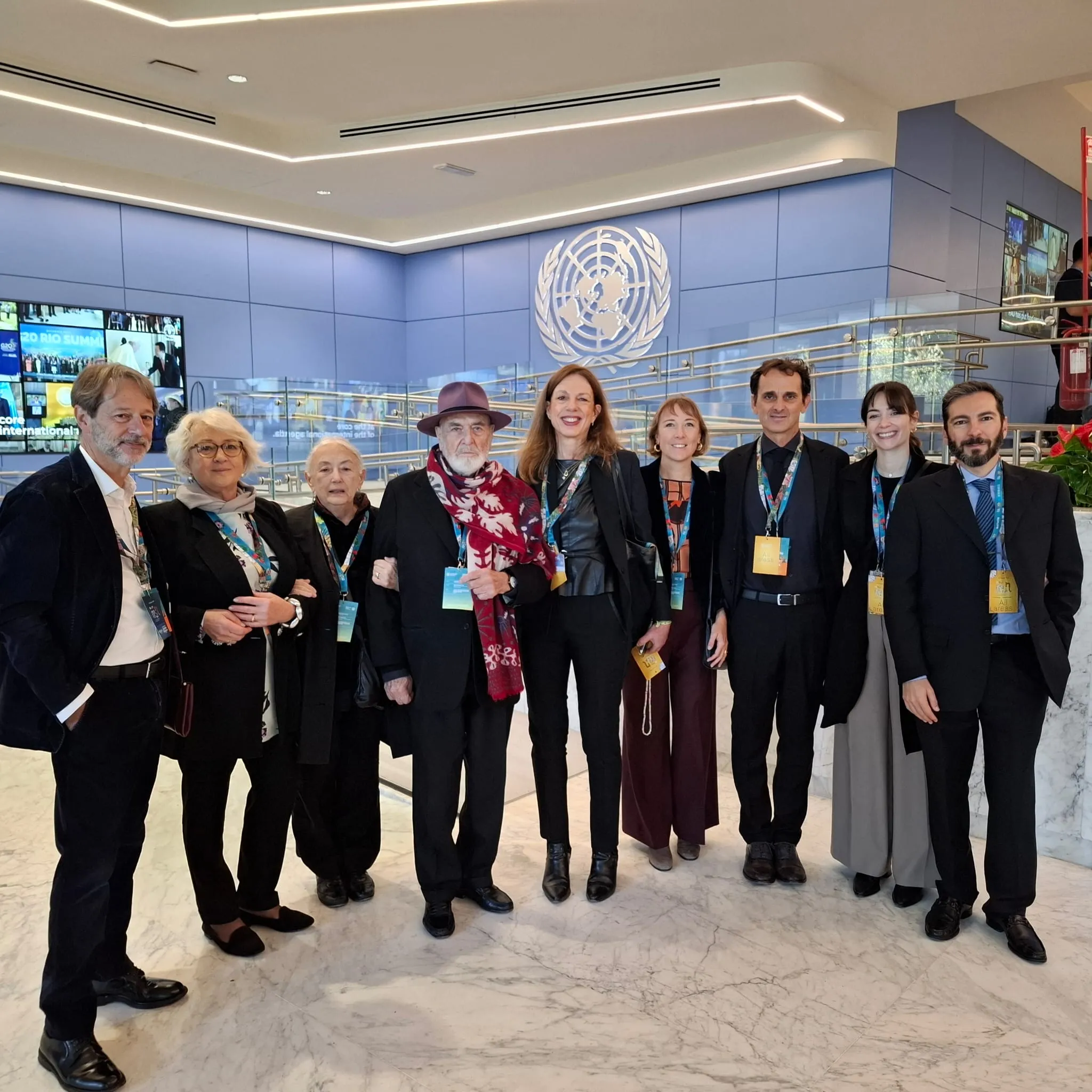
Luca Bergamo, Giuliana Setari, Maria Pioppi, Michelangelo Pistoletto, Clara Velez Fraga, Marina Maffei, Paolo Naldini, Laura Hernandez Borras e Tiziano Guardini.
The Inauguration and Pistoletto's Speech
The inauguration of the FAO MuNe, which took place yesterday, was attended by numerous institutions and distinguished guests. Among the numerous speakers were QU Dongyu, Director-General of the FAO, the Pope, and Sergio Mattarella, President of the Italian Republic. The latter also met—backstage—with Michelangelo Pistoletto and Cittadellarte Director Paolo Naldini: it was a brief but meaningful opportunity for dialogue and discussion about the Cultivating the Third Paradise installation at the FAO.
In the afternoon, the founder of Cittadellarte was one of the speakers at the talk "Foods Futures - Conversations for a Better World," in the panel "Better Life - Dignity, Justice & Opportunity in Food Systems."
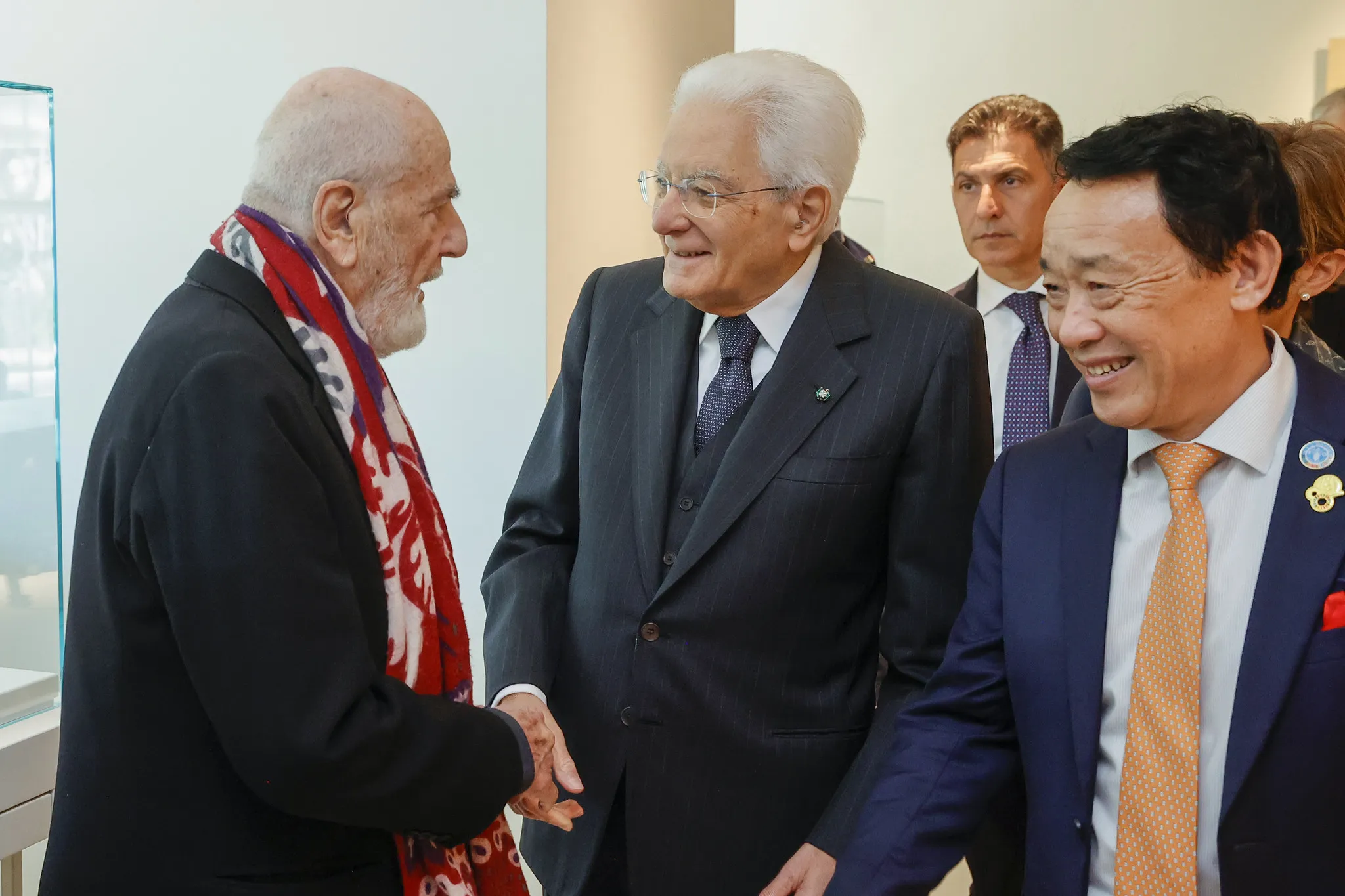
Michelangelo Pistoletto, the President of the Italian Republic Sergio Mattarella and the Director-General of FAO QU Dongyu.
©FAO/Pier Paolo Cito. Editorial use only. Copyright ©FAO.
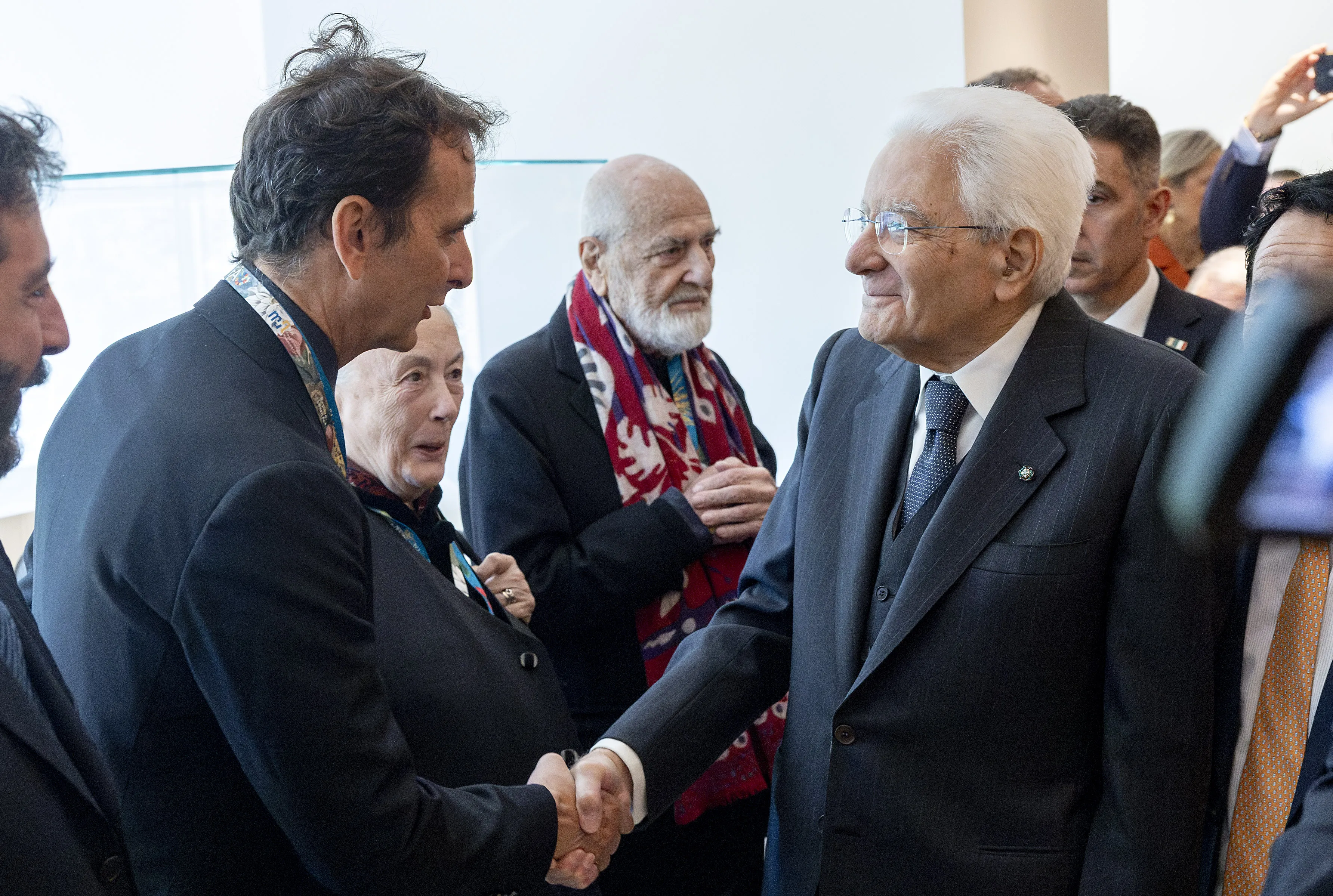
Paolo Naldini, Director of Cittadellarte, and the President of the Italian Republic Sergio Mattarella.
©FAO/Pier Paolo Cito. Editorial use only. Copyright ©FAO.
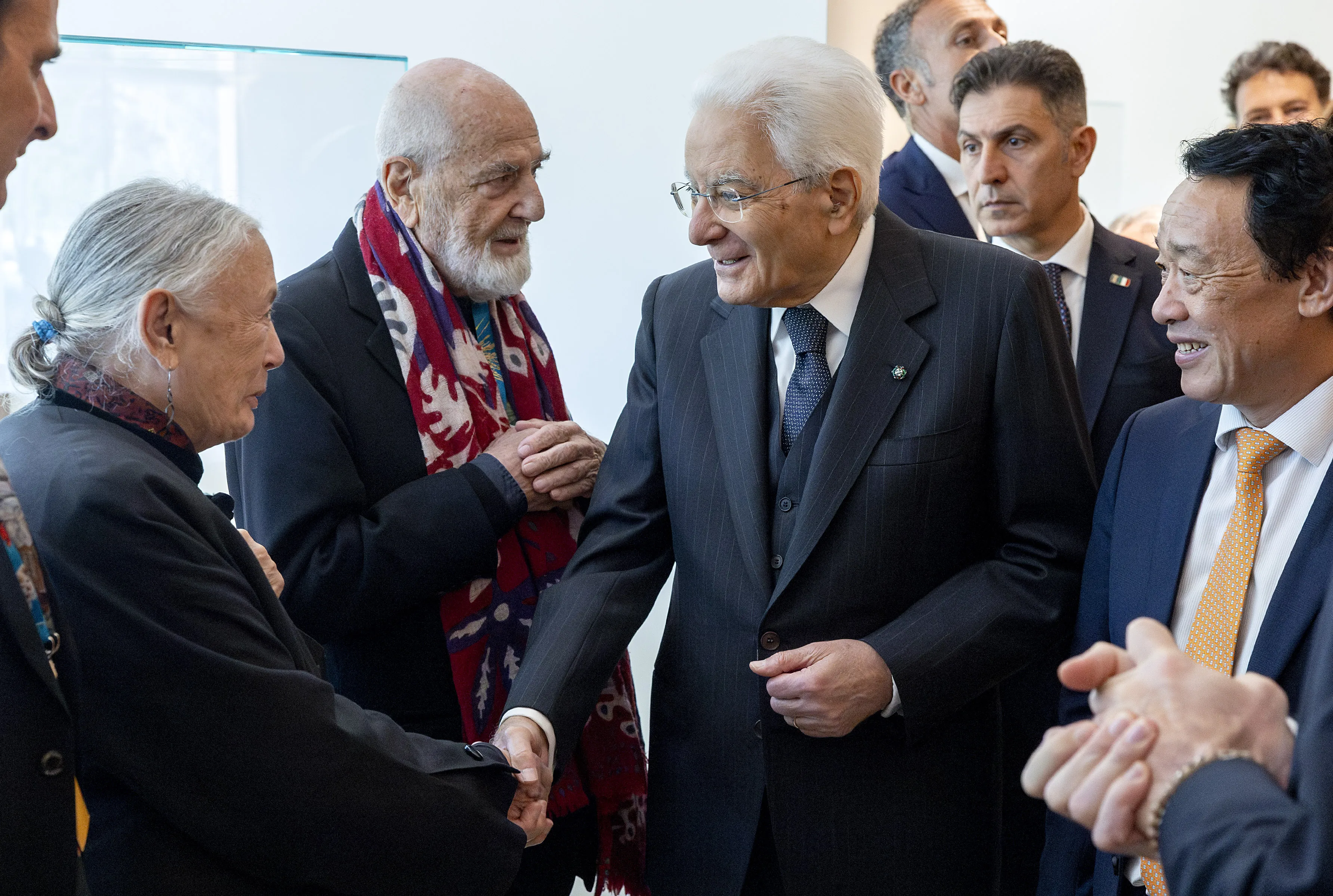
Maria Pioppi and the President of the Italian Republic Sergio Mattarella.
©FAO/Pier Paolo Cito. Editorial use only. Copyright ©FAO.
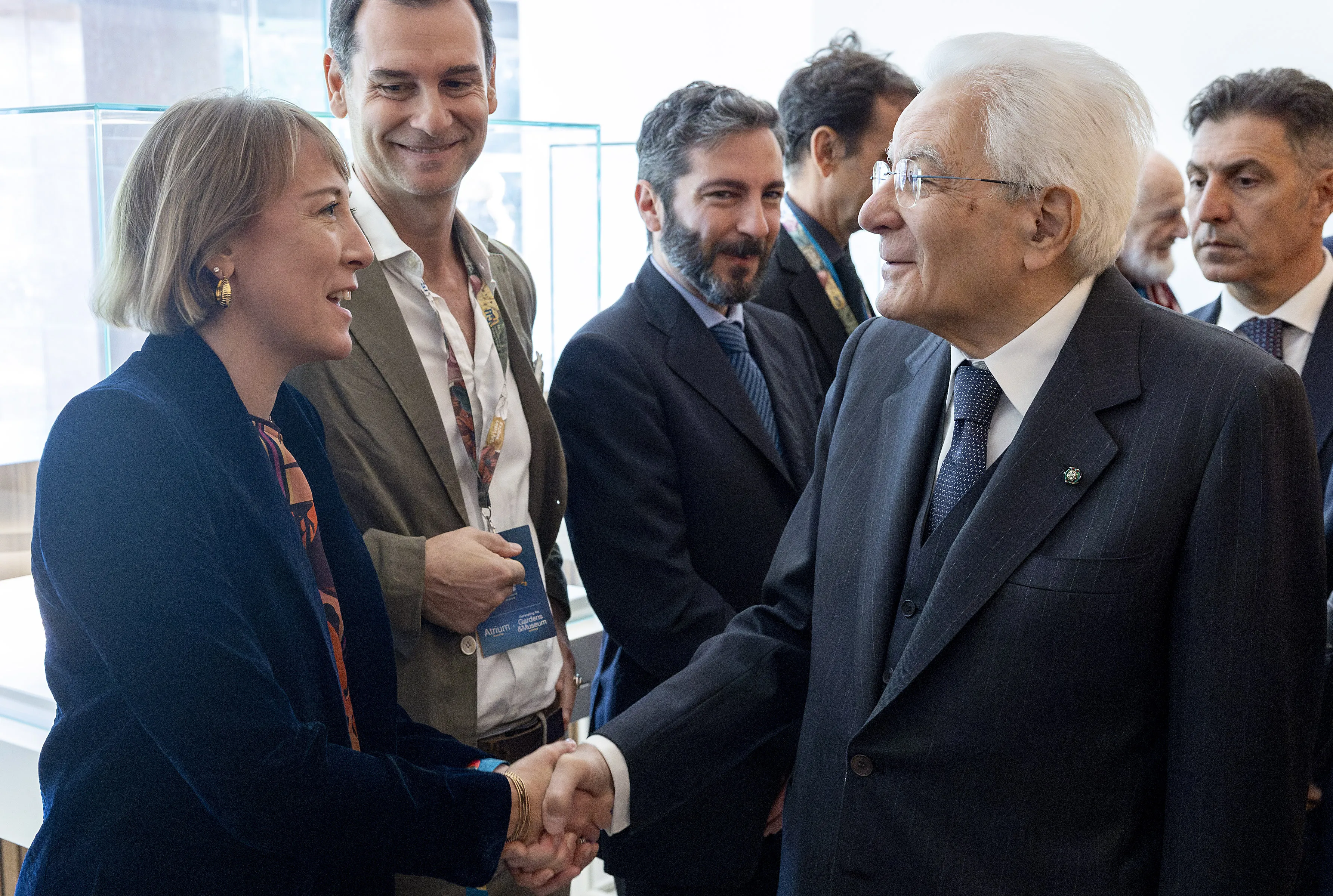
Marina Maffei, Personal Assistant to the Director of Cittadellarte and Executive and Organizational Manager of Cittadellarte, and the President of the Italian Republic, Sergio Mattarella.
©FAO/Pier Paolo Cito. Editorial use only. Copyright ©FAO.
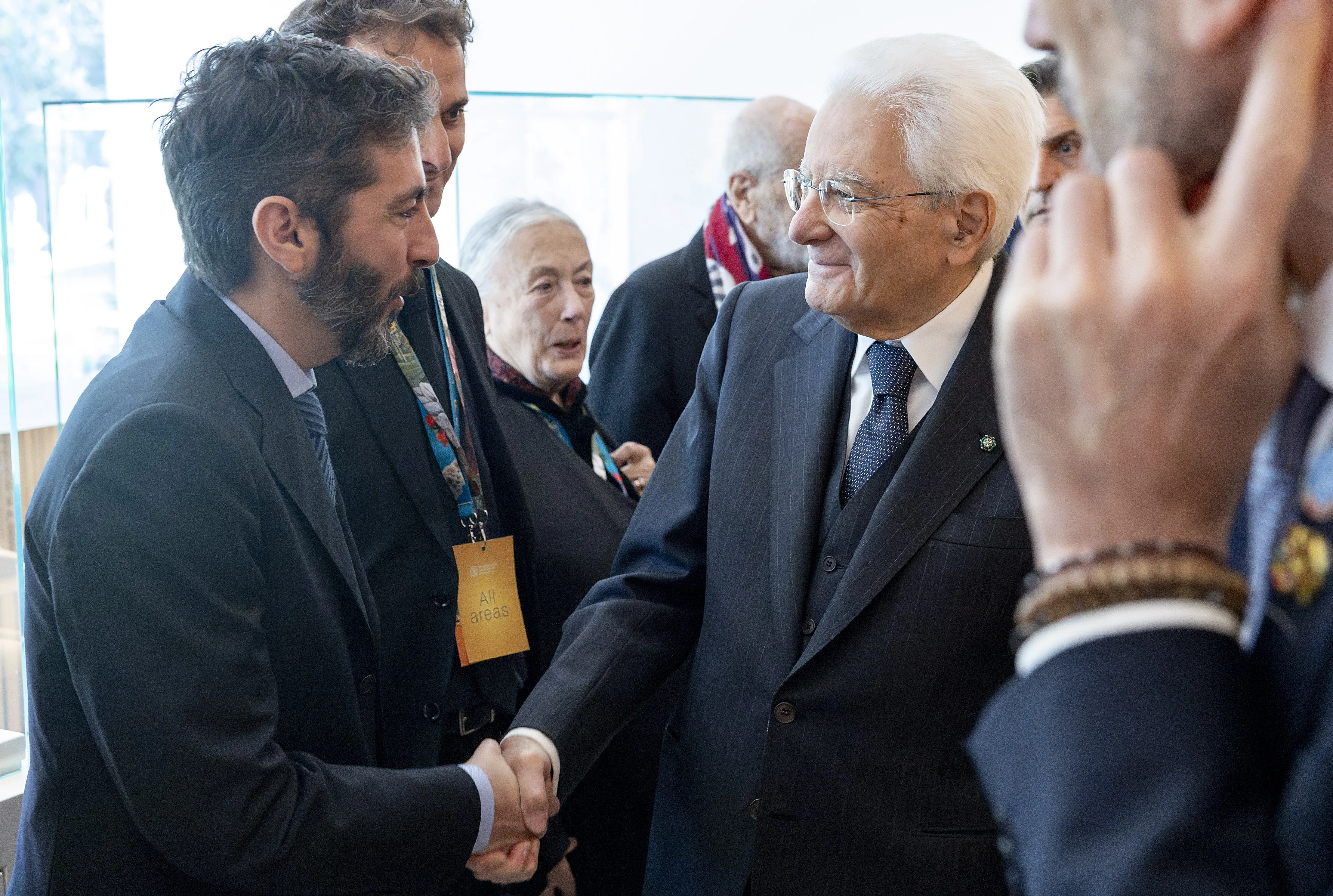
Tiziano Guardini, Guardini Ciuffreda Studio, and the President of the Italian Republic Sergio Mattarella.
©FAO/Pier Paolo Cito. Editorial use only. Copyright ©FAO.
Paolo Naldini and the Layers of Culture
Paolo Naldini, director of Cittadellarte, reflects on this duality: "Who tasted all the plants to determine if they were poisonous? And who taught us how to grow and treat them? Answering these questions means navigating a sea of innovation and tradition. We walk our days as if on the shoulders of a giant, grown over millennia thanks to the courage and intelligence of those who came before us. These are layers of knowledge that, like the layers of soil, form the humus of humanity—that is, culture. The installation of the Symbol of the Third Paradise for the MuNe allows us to see this stratification, made up of thousands of ideas, experiments, and activities: this is the best place in the world to host the installation we designed, because we arrive at the United Nations with the wealth of knowledge and stories that constitute the United Nations; together, they are our civilization."
When Nature Becomes Knowledge
Conceived as a continually evolving work, the installation grows over time, enriched with new content and interpretations in dialogue with advances in scientific research, sustainable agriculture, and food culture. A space for reflection, observation, listening, and dialogue: an invitation to cultivate together the hope of a more just, harmonious, and sustainable future for all humanity. "With Coltivando il Terzo Paradiso, we wanted to create a living place where nature is celebrated and becomes knowledge. The Terzo Paradiso here becomes a landscape to be inhabited, an organism that grows and breathes alongside people, generating connections between agricultural tradition and sustainable innovation. It is an invitation to cultivate awareness, beauty, and responsibility, transforming every gesture into an act of care for the land and for life," emphasize artists Tiziano Guardini and Luigi Ciuffreda.
The Poplar
The work was created thanks to the technical support of Panguaneta, which provided the poplar wood for the structure, a symbol of balance and rebirth. Nicoletta Azzi, CEO of Panguaneta, states: "We are honored that a raw material like poplar, the focus of our enterprise, fruit of the earth, and processed by our company, is transformed by an artistic interpretation brought to life in the work of Maestro Michelangelo Pistoletto thanks to the creativity of designers Tiziano Guardini and Luigi Ciuffreda. The Terzo Paradiso arena that will welcome the public to the new space of the FAO Museum thus becomes a tangible and permanent sign of sustainable creativity and a tool for reflection on the major issues at the heart of the World Organization."
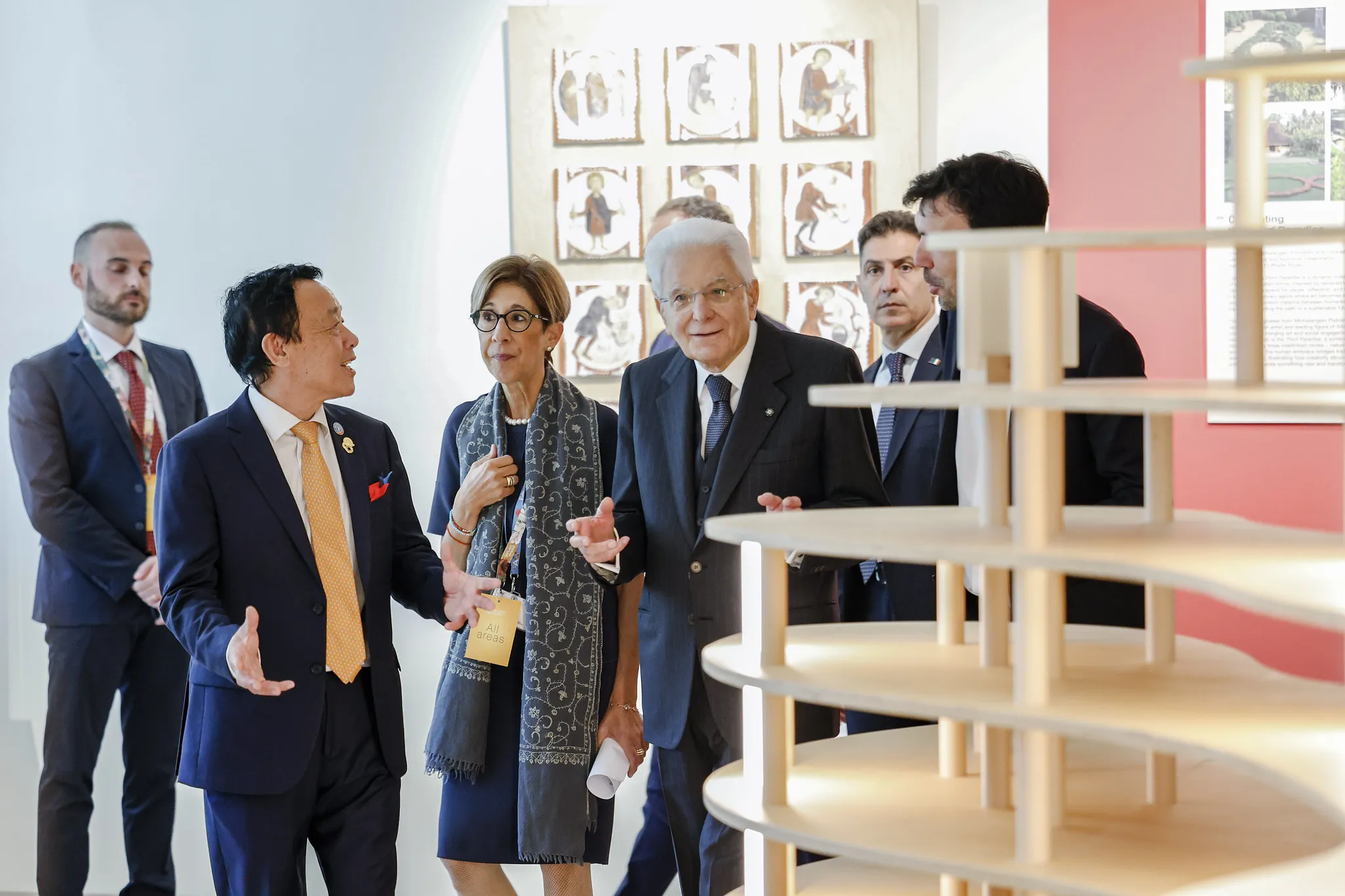
FAO Director-General QU Dongyu and Italian President Sergio Mattarella in front of the "Cultivating the Third Paradise" installation
©FAO/Pier Paolo Cito. Editorial use only. Copyright ©FAO.
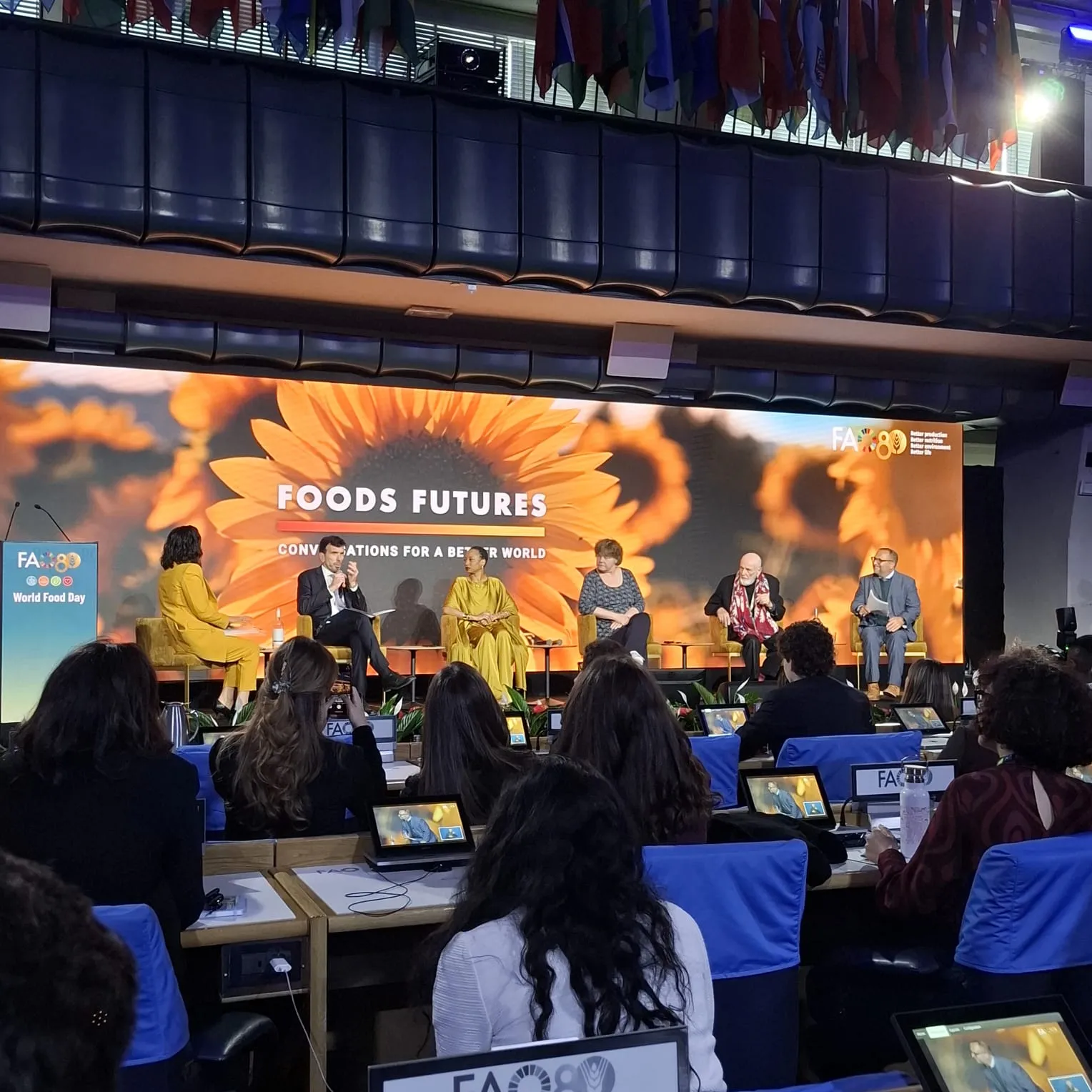
The speech featuring Pistoletto.
The Installation
The structure, inspired by terraced rural landscapes, is composed of wooden layers that rise and intertwine like cultivated hills, evoking the cyclical rhythm of nature. These layers become functional surfaces (shelves, display cases, display shelves, and containers) that house seeds, natural materials, agricultural samples, and visual narratives. At the same time, they transform into stands on which to sit, observe, converse, and share, generating a space for listening and co-creation open to all. Making the work even more dynamic, luminous lines traverse it like roots of light, symbolizing the lifeblood that nourishes the earth and the shared knowledge that FAO disseminates throughout the world. Light thus becomes a metaphor for the interconnection between living beings, nature, and technology.
The Third Paradise: a universal symbol of coexistence
The project is based on the Third Paradise, a symbol conceived by Michelangelo Pistoletto and composed of three interconnected circles—nature, artifice, and humanity—representing the search for balance between natural and human-made systems. In this vision, art becomes a force for transformation and regeneration, a universal language capable of uniting science and ethics in creation. The installation features 17 sculptures dedicated to the Sustainable Development Goals (SDGs), each accompanied by a QR code linking to content and insights on the respective goals. In this way, the work intertwines the symbolic dimension of art with the educational and informative dimension of the museum. The collaboration between Cittadellarte and the FAO stems from a shared vision: to promote a dialogue between tradition and innovation through art, enhancing creativity as a driver of awareness and change.
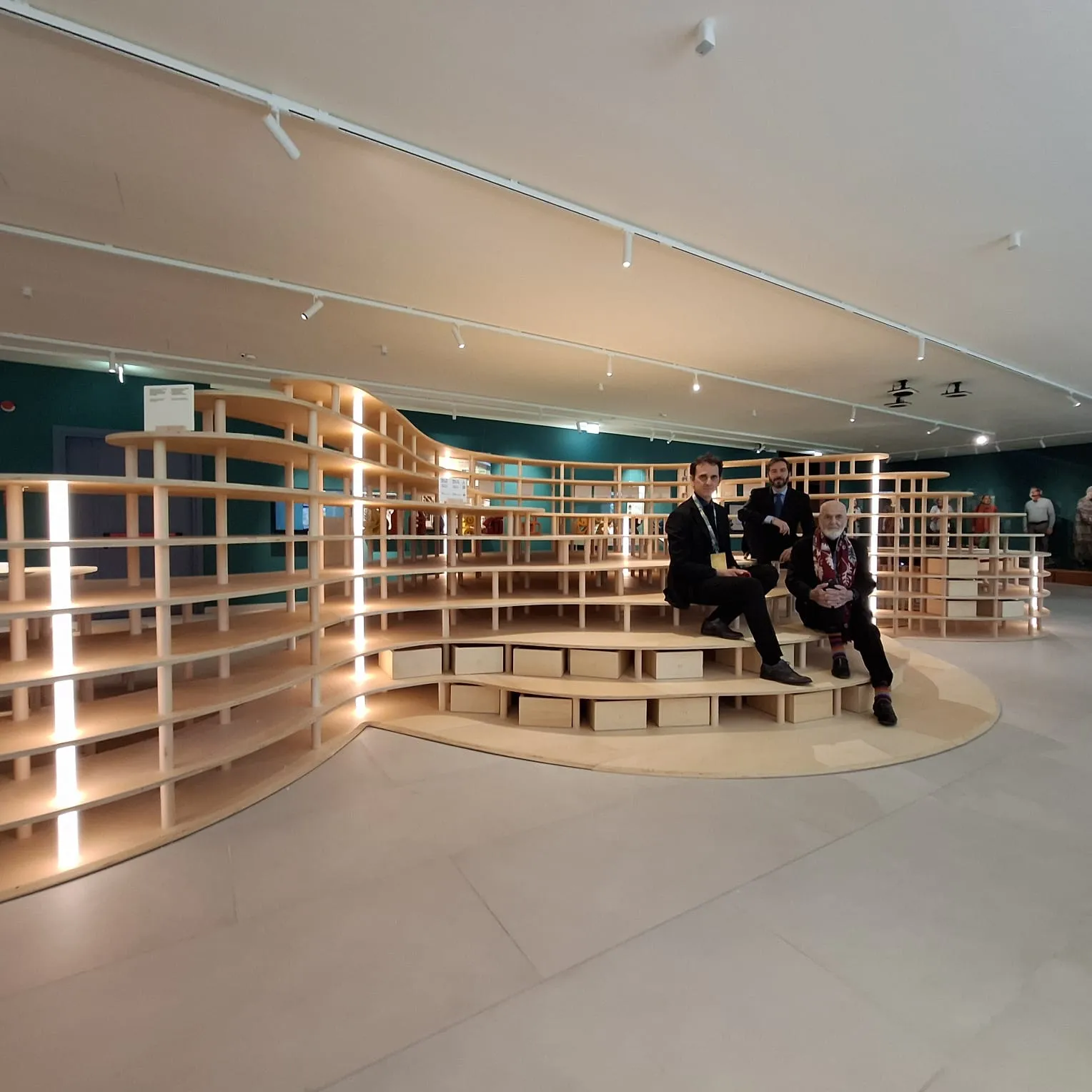
Paolo Naldini, Tiziano Guardini, and Michelangelo Pistoletto sit on "Cultivating the Third Paradise."
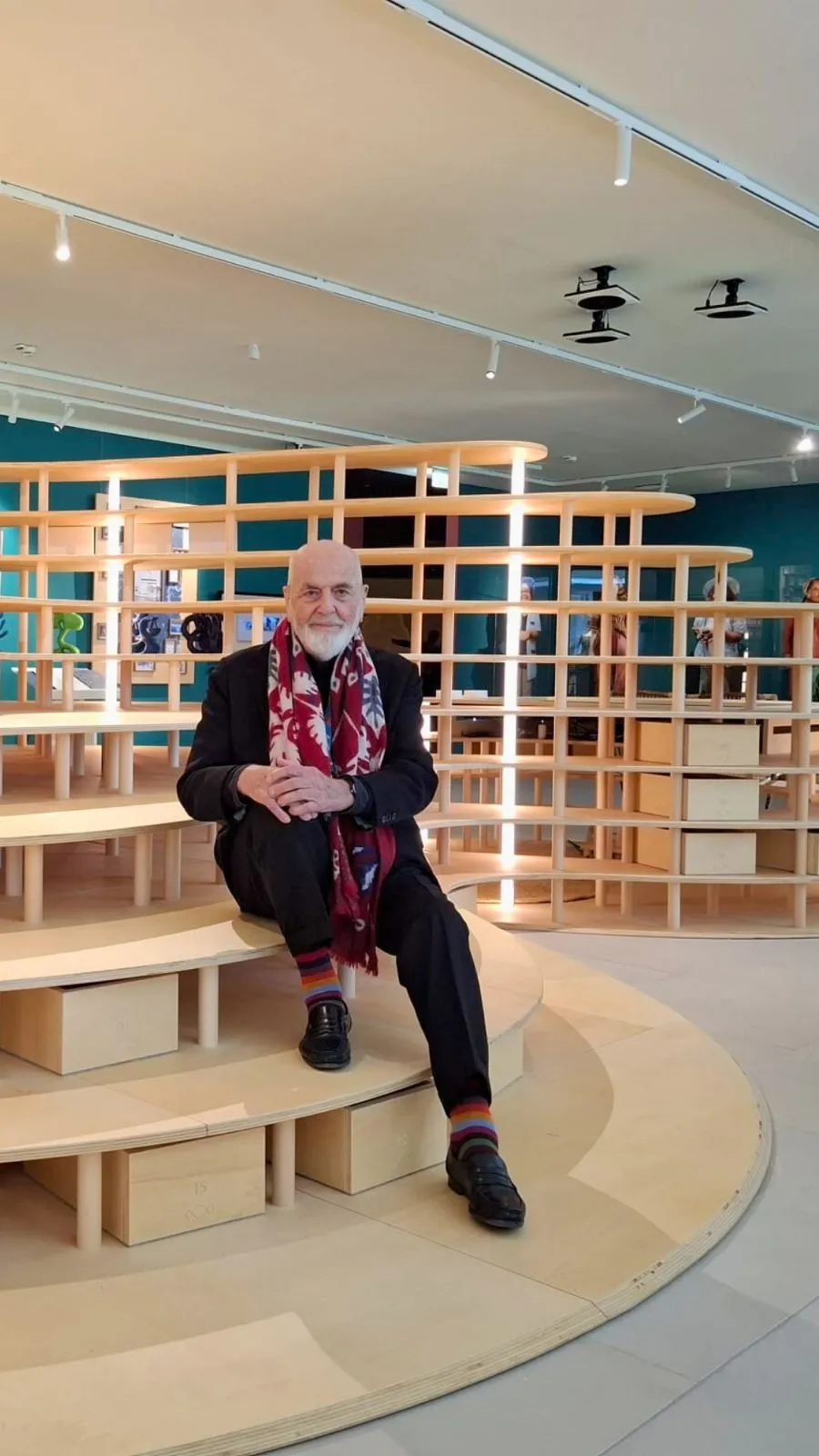
Michelangelo Pistoletto sitting on the installation "Cultivating the Third Paradise".





